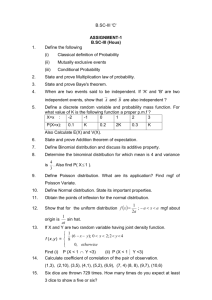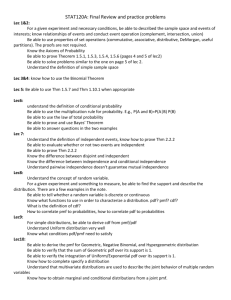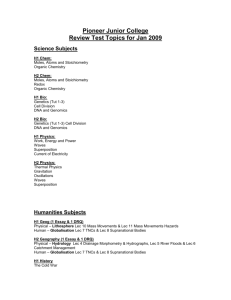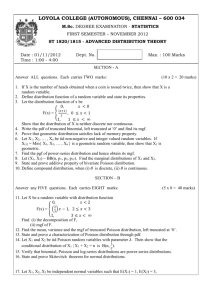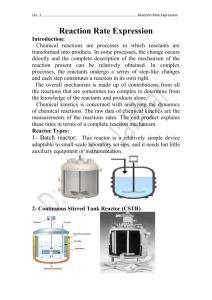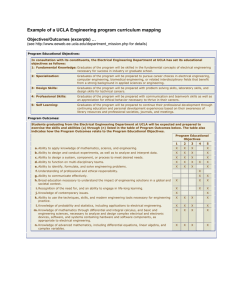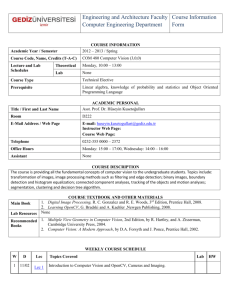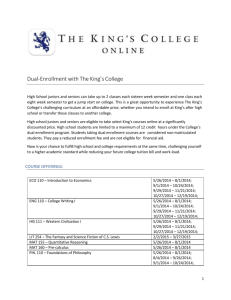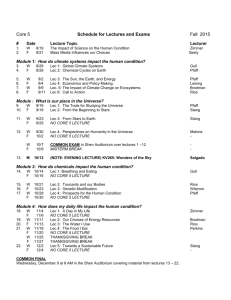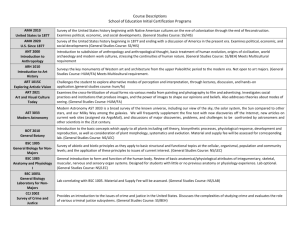200A Final Review Lec 1&2: Be familiar with set operations and
advertisement
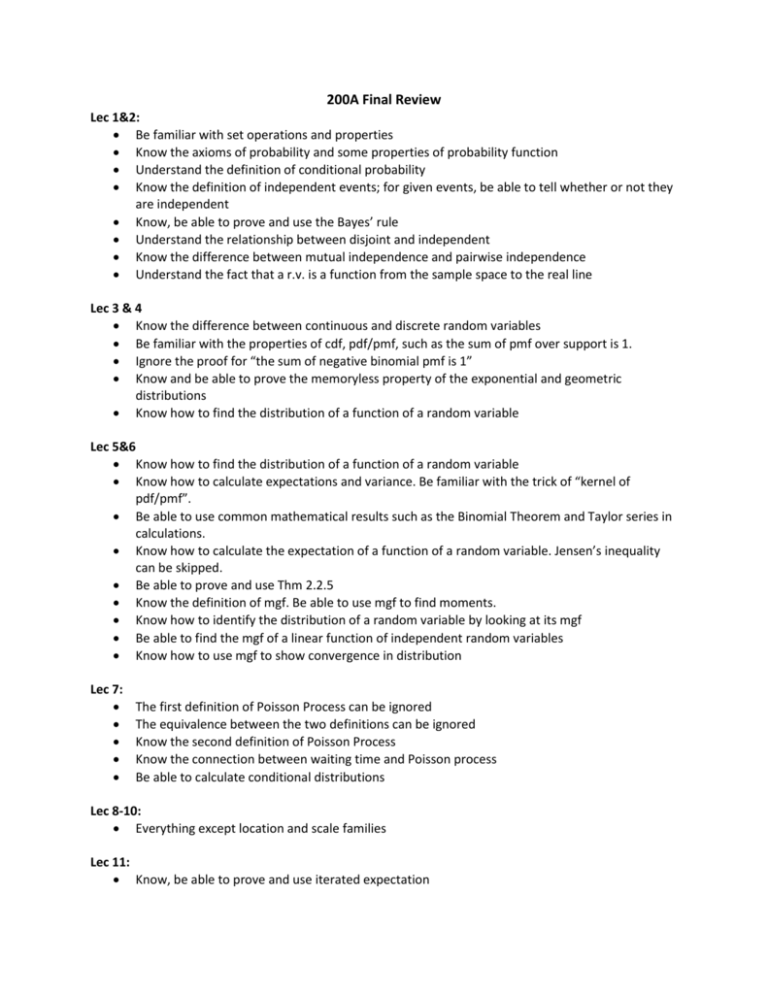
200A Final Review Lec 1&2: Be familiar with set operations and properties Know the axioms of probability and some properties of probability function Understand the definition of conditional probability Know the definition of independent events; for given events, be able to tell whether or not they are independent Know, be able to prove and use the Bayes’ rule Understand the relationship between disjoint and independent Know the difference between mutual independence and pairwise independence Understand the fact that a r.v. is a function from the sample space to the real line Lec 3 & 4 Know the difference between continuous and discrete random variables Be familiar with the properties of cdf, pdf/pmf, such as the sum of pmf over support is 1. Ignore the proof for “the sum of negative binomial pmf is 1” Know and be able to prove the memoryless property of the exponential and geometric distributions Know how to find the distribution of a function of a random variable Lec 5&6 Know how to find the distribution of a function of a random variable Know how to calculate expectations and variance. Be familiar with the trick of “kernel of pdf/pmf”. Be able to use common mathematical results such as the Binomial Theorem and Taylor series in calculations. Know how to calculate the expectation of a function of a random variable. Jensen’s inequality can be skipped. Be able to prove and use Thm 2.2.5 Know the definition of mgf. Be able to use mgf to find moments. Know how to identify the distribution of a random variable by looking at its mgf Be able to find the mgf of a linear function of independent random variables Know how to use mgf to show convergence in distribution Lec 7: The first definition of Poisson Process can be ignored The equivalence between the two definitions can be ignored Know the second definition of Poisson Process Know the connection between waiting time and Poisson process Be able to calculate conditional distributions Lec 8-10: Everything except location and scale families Lec 11: Know, be able to prove and use iterated expectation Be able to use conditional variance identify Non-central chi-square can be ignored Lec 12: Be able to use several tricks, such as “proportional to”, “kernel of pdf/pmf”, to simplify calculations for posterior distributions/means/variances Know how to find the distribution of a function of several random variables Know the definition of covariance and correlations. Be familiar with their properties and be able to use them Lec 13&14: Understand the relationship between zero covariance/correlation and independence Be able to derive covariance from conditional and marginal distributions from multinomial distribution Understand that similar tricks used in the multinomial can be used for Dirichlet You don’t have to memorize all the definitions of MVN but you should be familiar with and be able to prove properties of MVN Lec 15: Know the formula of conditional distribution Be able to prove the Lemma on page 62 Be able to prove 1,2,4 of the example on page 62 Know how to derive the distribution of the larges and smallest order statistics Lec 16: Be familiar with the definition of convergence in probability Be able to use the definition to show convergence in probability Be able to prove and use Chebyshev’s Be able to do all the examples by yourself Lec 17&18: Know and be able to use the continuous mapping theorem. The proof is not required. Understand that there is something called SLLN, which is stronger than WLLN. Be familiar with the definition and convergence in distribution. Be able to use the definition to show convergence in distribution Know the relationship between convergence in probability and in distribution. The proofs are not required Be able use mgf to show convergence in distribution Be able to state and prove the CLT Be familiar with Slutsky’s theorem. Be able to replicate the proof in the example on page 9 (“convergence 9”) Be able to use the first order Delta method to find asymptotic distributions Understand and know how to use the result of multivariate CLT Be able to use multivariate delta method to solve problems
